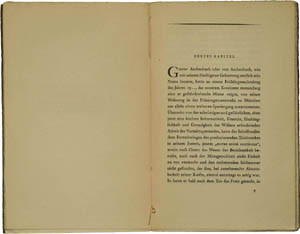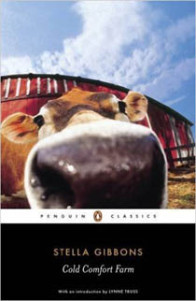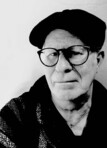Colin Garrow's Blog, page 80
February 12, 2016
Meet and Greet Weekend @ DBDO: 2/12/16

It’s the Meet and Greet weekend at Dream Big!! There are a few simple rules that will help make this MnG the most incredible networking experience:
Leave a link to your page or post in the comments of this post.
Reblog this post. It helps you, it helps me, it helps everyone! So don’t be selfish, hit the reblog button.
Edit your reblog post and add tags.
Feel free to leave your link multiple times! It is okay to update your link for more exposure every day if you want. It is up to you!
Share this post on social media. Many of my non-blogger friends love that I put the Meet n Greet on Facebook and Twitter because they find new blogs to follow.
Now that all the rules have been clearly explained get out there and Meet n Greet your butts off!
See ya on Monday!!

Saying the Same Old Thing…
 One of the challenges in writing novels is how we use language. A big part of that language (obviously), is the words we use to say what we want to say. And while there are a fair few words available, it can be tough to constantly come up with new ways of saying the same thing.
One of the challenges in writing novels is how we use language. A big part of that language (obviously), is the words we use to say what we want to say. And while there are a fair few words available, it can be tough to constantly come up with new ways of saying the same thing.
The way I work is to write my novel/story/whatever until I get to the end and then start editing/rewriting/honing my prose etc. And to be honest, I’m always amazed, and sometimes a little embarrassed, to discover some of the stuff that has to be given the boot. Here are my worst offenders:
Really
Yeah, I know, it’s one of those redundant groups of letters that get chucked in on the way to somewhere else and really isn’t needed. See – just there.
He/she raised an eyebrow
This is my albatross. In my mid-range novel The Architect’s Apprentice , I found myself popping it in without thinking. By the time I reached the end I found 17 people raising their eyebrows in reaction to just about anything.
, I found myself popping it in without thinking. By the time I reached the end I found 17 people raising their eyebrows in reaction to just about anything.
In order to
If writers were hung, drawn and quartered for using this one, I’d be in bits by now. The sensible thing, is of course, to replace it with ‘to’. Easy.
Then
This is another one on my bugbears and I have trouble finding replacements for it. Being somewhat unspecific, it should be swapped for words or phrases that are specific.
Inclined his/her head
This goes along with all those other things folk do with their heads: swivel, turn, drop, shake, roll and so on.
Gaze
Characters do occasionally have to look at stuff/people/events. Mine do lots of gazing, glancing, staring and peering so maybe it’s time I added some more appealing descriptions of what we do with our eyes? (He said with a glower).
He said/she said
Dialogue tags are one of the small changes I’ve been making to my work. I remember reading Mark Billingham’s Sleepyhead and noticing how little he used them. Nice. However, it’s a difficult habit to escape. (The author nodded, as if to affirm this fact).
and noticing how little he used them. Nice. However, it’s a difficult habit to escape. (The author nodded, as if to affirm this fact).
Sits/leans back/forward
My characters are forever shuffling around in their seats to get closer or further away from whoever they’re talking to. So far I haven’t discovered a way to stop them doing it. Damn them all!
I never buy a book without reading the first page and it’s only if I can get past that first page that I’ll consider buying it. Of the dozens of books I peruse by indie authors, it seems that an author’s first book, perhaps unsurprisingly, suffers most from poor quality writing. Sometimes it feels like an epidemic – like some many-tentacled literary monster, poisoning texts, chapter headings and even titles.
Poorly-constructed sentences, grammar and spelling errors, repeated words (unless used as a literary device) are a few of my regular aggravations. And of course, the same things irritate me about my own writing. The more I write, the more I feel the need to adjust my writing style to make it better, more readable, memorable. But learning how to write better is part of a writer’s job and even though I’m complaining about it. I also love it! (Have to stop using exclamation marks…)

February 11, 2016
‘Cold Comfort Farm’ by Stella Gibbons
I’ve wanted to read this novel since seeing the movie version back in the late 90’s (starring Kate Beckinsale, Eileen Atkins and Ian McKellen), but it’s taken me til now to actually get around to it.
Stella Gibbons was working at the Evening Standard in 1928 when the paper decided to serialise Mary Webb’s ‘The Golden Arrow’. Gibbons took on the task of summarising the novel and as a consequence, her low opinion of Webb’s writing prompted the creation of a rather more satirical version of the day-to-day drudgery and despair inherent in rural life.
It’s an odd book. Set at some future time when air-postmen and video telephones are not uncommon, the story concerns Flora Poste, who goes to live with her relatives the Starkadders following the death of her parents. Encountering a shambolic and haphazard existence at the farm, she sets about educating family members and workers alike, in the hope of enabling them into adopting a more modern way of life.
One of the things I love about Cold Comfort Farm is the language – the text is peppered with wonderfully bizarre character names such as Harkaway, Caraway, Urk, Mrs Beetle and (best of all) the mysterious Aunt Ada Doom, whose obsession with having ‘seen somethin’ narsty’ in the woodshed when she was young, and her refusal to countenance change in any form, hangs over the farm like a giant magnet, keeping its inhabitants from doing anything that might in any way enhance their dreary lives. The dialogue too, is littered with strange, but authentic-sounding rural terms like sukebind, mollocking and clettering, as well as unusual farm animals including Graceless, a cow with a wooden leg.
At times the writing might have benefited from a little considerate editing, but on the whole this is a highly enjoyable read, particularly the ending, where the description of the farm and its surroundings is quite lovely.

Reviewed Books
Although I sometimes receive review copies free from authors, I also review books I’ve bought myself. For every book I review, irrespective of how or where I acquired it, I’ll always give my honest opinion. So if I don’t like a book, I’ll say so, or (more likely) I won’t finish it, in which case there won’t be a review anyway (unless I really hate the author – tee hee).
Affiliate Links
I make use of affiliate links such as those provided by Amazon Associates, Kobo and Barnes and Noble. When you click on those links, I earn a (very) small percentage. Of course, you could just go onto Amazon (or whatever) yourself and spend your hard-earned cash, in which case I won’t earn a penny, but if one of my reviews inspires you to buy a book, then that’s great. After all, authors are nothing without book-buyers.

January 30, 2016
6 Silly Book Things We Never Notice…
Reading a book is a lot different to writing a book. There’s a ton of stuff we take for granted that publishers and printers (and of course, indie authors) know all about, but that might not be obvious to the newbie author/publisher. 
Now, I don’t consider myself to be a newbie but every day I learn something new about books, writing and publishing. And while it’s all fascinating stuff, it’s stuff I need to know about and understand. This has become more obvious to me over the last month or so and the various challenges of publishing my books on Createspace…
1 White space
Leaving huge gaps or spaces when formatting a manuscript for an eBook is verboten, as readers generally don’t want to be scrolling down, down, down to find the next bit of text. In proper printed books, however, the spacing out of text and images is important for presentation – cramming everything up doesn’t look good. In my hard-back version of Sarah Waters’ The Paying Guests for instance, there’s a nice pattern on the first two pages, then a measured five page turns before we get to the first chapter. It looks good, it feels good, and it smells quite nice too.
for instance, there’s a nice pattern on the first two pages, then a measured five page turns before we get to the first chapter. It looks good, it feels good, and it smells quite nice too.
2 Start on the Right
I’m sure I knew this before, but it wasn’t until I was forced to consider it for my own books that I realized the first chapter always starts on an odd-numbered page on the right hand side. This is traditional in book publishing and probably unnoticeable to most folk – until they come across a book that starts on the left hand page, and then it stands out (probably because we’re used to seeing it on the other side). Whether you go with the further tradition of starting every chapter on the right hand page is another matter. Most of the tomes on my bookshelf don’t follow this ritual, but I can see why they might – as with White Space, it looks nice.
3 Blank pages
Creating a manuscript where the first chapter is on the correct page, often prompts the need for the insertion of a blank page. When I first tried this, I naturally assumed it was simply a case of hitting ‘enter’ until I got to the next page. But no. Blank pages have to be fixed in place so they don’t disappear later on. I now do this using the time-honoured method of creating page breaks/sections. (I won’t go into how, as my own research revealed a multitude of different methods and I’m not sure my way is the best. Anyhoo…)
4 Page Numbers
The first book I attempted to publish on Createspace (The Architect’s Apprentice) resulted in a nicely laid out copy – without page numbers. Arrgh! Okay, so I forgot. And I must admit I did wonder how necessary they are, but common sense prevailed and I got to grips with the (again) multitude of different methods that might/hopefully lead to displaying the correct numbers (odds on the right, evens o n the left) in the right places. After several wretched days of duplicated numbers, unnumbered pages and other catastrophes, I finally got the hang of it. Well, I say that, but it still doesn’t work every time.
n the left) in the right places. After several wretched days of duplicated numbers, unnumbered pages and other catastrophes, I finally got the hang of it. Well, I say that, but it still doesn’t work every time.
5 Headers and Footers
This is another one of those traditions that some folk ignore while others swear by. The idea of having the author’s name at the top of one page and the title of the book on the other, once again, isn’t borne out by the bestsellers on my bookshelves (Sarah W doesn’t do it), so I’ve ignored this, though I’ll admit it would add a little something to the overall presentation, so it’s something to think about for the future.
6 Justification
This is another of those traditions that we’re all used to – reading text that’s fully justified ie goes right to the edge, giving the impression of a block of text, rather than a raggedy edged one. While eBooks don’t require such rigidity, I’ve noticed an increasing number of authors are going with the simple left-justified look in their printed books and though at first I did think it a little odd, like a bowl of soup, I’m definitely warming to it. Anyway, I’ve fully justified some of my books and not others and so far I haven’t decided which is best.
Tradition is often nothing more than the way we’ve always done things, but that doesn’t mean we have to continue in the same vein. After all, if that were the case, we wouldn’t have eBooks. As Bowie said, ‘Ch-ch-ch-ch-changes, Turn and face the strange…’

December 26, 2015
Moving on up...
Tennyson certainly had a handle on the old 'chuck out the old, get with the new', idea, but what he didn't have was a Blog. Okay, so what I'm saying is that with the New Year approaching, it's time to move on, so this old blog is migrating to my new website
December 16, 2015
This Year Winding Down Now...
posts of 2015. As the year draws to a close, it's always useful (I like to
think) to look back on all my achievements in the last twelve months.
Naturally, I wouldn't be doing this if I hadn't achieved anything, so it's just
as well I've managed to add a few notches to my literary bedpost.
So, to sum up my wordish
December 6, 2015
Paperback Writer - Making Books
thousands more are venturing into the world of paperbacks. Over recent months
I've been seeing more and more blog posts about one of the popular options -
Createspace - so I thought it was time I found out a bit more...
Createspace is an Amazon company, so I was a little bit wary, not
wanting to be persuaded to go down the '
November 28, 2015
First Drafts and Other Hurricanes
"The first draft of everything is shit."
Maybe it is, but it also depends on what you term to be a First Draft. As my approach to writing has changed dramatically in recent months, I no longer write and edit as I go along, but instead, simply write until I get to the end and then start the process of re-writing/editing/correcting.
So is a first draft simply the
November 17, 2015
Stand Up and Write!
why I worded it this way, since the course was certainly not about standing up
to write, however, this post is about that very activity - writing standing up.
Ernest Hemingway famously wrote standing up. Even though he apparently
had a 'tower workroom' which he retired to when the need arose, most of his writing
was done
November 15, 2015
Amelia Dyer - the Killer Character
happened on a bunch of Victorian villains. One that stood out from the others
was Amelia Dyer - baby killer. At first glance, maybe she wasn't ideal material for a children's adventure, but I reckoned she'd be good for a bit of source material:
Having trained as a nurse as well as







